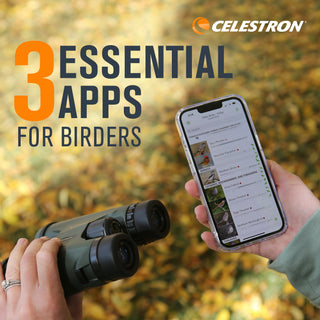When choosing a pair of binoculars, what factors should I consider?
August 4, 2021
 A good pair of binoculars or spotting scope is designed to last for many years - so don’t be stingy on the research. Know what you want for your optics to assist your observing needs. There are essential factors to look at to ensure high-quality performance.
A good pair of binoculars or spotting scope is designed to last for many years - so don’t be stingy on the research. Know what you want for your optics to assist your observing needs. There are essential factors to look at to ensure high-quality performance.
Key things to Look at:
- Objective lens diameter
- Magnification
- Lens glass and coatings
- Prisms and lens and prism coatings
Objective Lens
The objective lenses of binoculars are the front lenses. The diameter of the lens determines how much light enters the binocular’s optical system, translating into greater detail and image clarity. The greater the objective lens size, the more detail you will see. Learn more about Objective Lens.
Magnification
Magnification is the degree to which the object you are viewing is made bigger against the standard, unaided human eye. Low and high magnification each have their benefits when viewing your object. Learn more about Magnification.
Lens Glass and Coatings
Take one look through a binocular or spotting scope equipped with ED glass or StarBright XLT coatings, and you’ll immediately notice the vivid, lifelike color and razor-sharp images. ED glass or extra-low dispersion reduces a visual defect called chromatic aberration producing sharp images. Learn more. StarBight XLT coating or (XLT coating) is found exclusively in Celestron optics. Our proprietary StarBright XLT optical coatings dramatically increase transmission through the optical lens. Learn more.
Other optical coatings reduce internal light loss and glare and ensure even light transmission, resulting in even greater image sharpness and contrast. Here is a list of all the optical coatings that you can find in binoculars or spotting scopes and how they will enhance your viewing. Click here.
Prisms, Lens and Prism Coatings
A prism is a transparent glass optical element with flat, polished surfaces positioned precisely to reflect light as it transits the optical system. There are two prism designs commonly used in binoculars, monoculars, and spotting scopes: Roof and Porro. Learn more about which method would be suitable for your viewing needs. Porro vs. Roof Prism
Types of prism glass; do you want BK7 or BaK4, and how do they enhance your view. Learn more here.
Types of prism coatings. Learn more.
Although all of these seem like a lot to research when picking your binocular or spotting scope, they are vital to research so you get an optic that works for you and can be your outdoor companion for years to come.
Some other things to consider, but not vital, when looking for a binocular or spotting scope is the weather resistance and durability.
Weather-resistant binoculars have minimal openings that can allow water to enter the optics. Waterproof binoculars go further and are designed to totally exclude water. They also may be nitrogen purged--filled with dry, inert gas--as an additional barrier to internal moisture, rendering them fogproof as well.
Rubber armoring provides a final level of external ruggedness and helps protect your binoculars from abrasion, damage, or loss of collimation if accidentally dropped. The rubber also makes them easier to grip in damp or wet weather conditions.


























